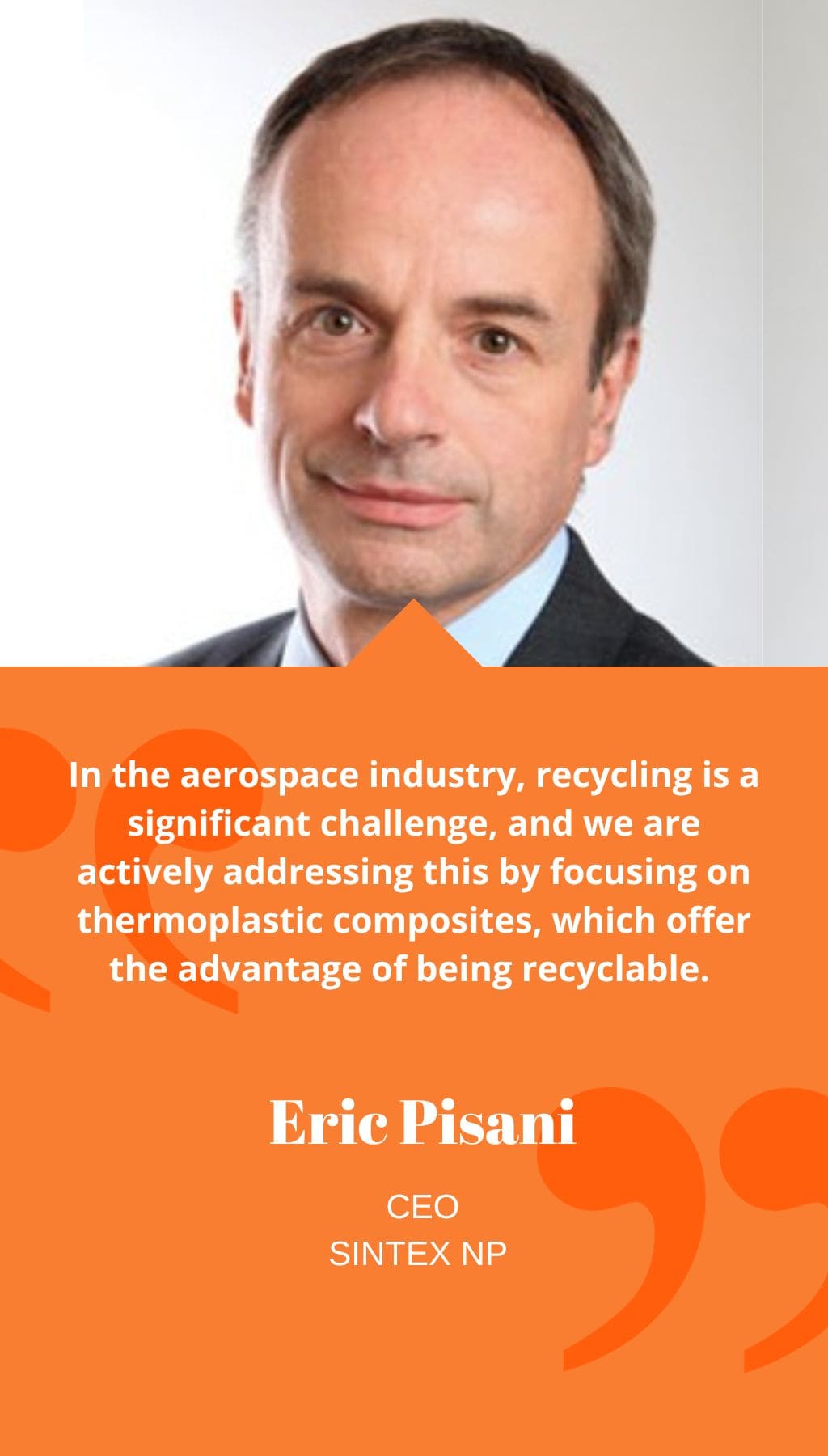
- France | 6 July 2018

Can you provide an introduction to Sintex NP group and highlight its recent performance in the international aeronautic space?
Sintex NP group has achieved €266 million in sales in 2017, with 8% of it generated from the aerospace industry. We have established our presence in France, Tunisia, and Morocco to be in close proximity to our key players and customers such as Airbus and its suppliers. Over the past three years, we have experienced significant growth, driven by the demand for new aircraft programs like the A350 and the LEAP engine.
To what extent has the pursuit of lighter materials been the main focus of Sintex NP’s research and development (R&D)? What innovative solutions has the company been able to bring to the market as a result?
Lighter materials have indeed been a primary driver for our R&D efforts at Sintex NP. We have observed that the increasing use of composites in the aerospace industry is largely due to the search for lightweight materials, which also offer cost-saving advantages. By utilizing thermoplastic processes, we have been able to reduce cycle times, resulting in a cost advantage. Additionally, our thermoplastic technology allows for integration of functions directly into the mold, providing further innovation in the market. We collaborate closely with universities, particularly INSA, for R&D projects focused on developing over-molding of Continuous Fibre Reinforced Polymers (CFRP), combining the mechanical functions of CFRP with integration of functions through injection moulding. Our expertise in thermoplastic composites has earned us a reputation as an industry expert, especially for small and mid-size parts.
How does Sintex NP conduct testing for its products, and what role does accreditation play in giving the company a competitive edge?
At Sintex NP, we conduct most of our manufacturing testing internally. For instance, non-destructive testing (NDT) using ultrasonic or dye penetrant testing is carried out by operators who are certified by COSAC-COFREND. Furthermore, our testing processes are NADCAP accredited. We believe that in-house mastery of processes is crucial to gaining a competitive advantage. Additionally, our heavy investment in R&D, with a focus on the development of thermoplastic composites applications, has allowed us to stay at the forefront of innovation in the industry, giving us a competitive edge.
Can you discuss the significance of sustainable development for Sintex NP as a company, and the challenges associated with end-of-life products? What plans does the company have for handling materials at the end of their lifespan?
Sustainable development is a key priority for us at Sintex NP. In the aerospace industry, recycling is a significant challenge, and we are actively addressing this by focusing on thermoplastic composites, which offer the advantage of being recyclable. Even if these materials cannot be recycled within the aerospace industry, we are exploring opportunities to repurpose them in other applications, such as the automotive industry. We are committed to addressing the challenges associated with end-of-life products and adopting sustainable practices in our operations.
How do you view the trend towards consolidation in the market to meet ramp-up demands, and what has been Sintex NP’s approach to this?
At Sintex NP, we recognize the trend towards consolidation in the market to meet the increasing demands for ramp-up. In fact, we have made several acquisitions in the past 25 years, allowing us to achieve a remarkable annual growth rate of 10% in Europe. These acquisitions, such as the one with AIP ten years ago, which brought expertise in machining and 3D printing of components, have enabled us to expand our presence in the aeronautics industry.














